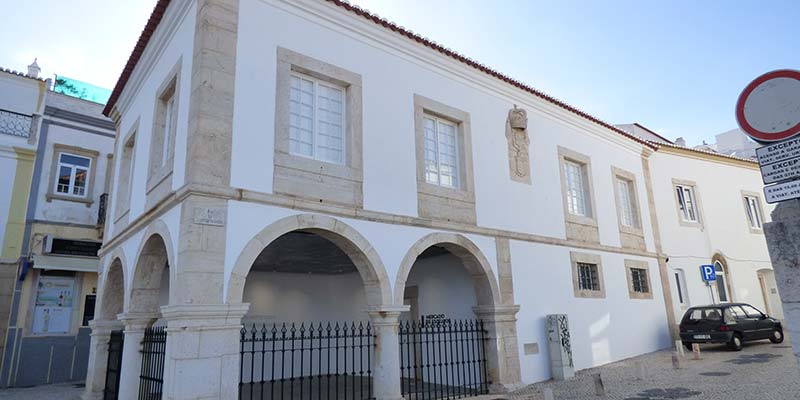Lagos, with its modern marina and small roads, where almost every other building is a bar or restaurant, is today one of the most popular tourist towns in the Algarve, but how many know its amazing history? Did you know that Portugal was responsible for starting the African slave trade and that Lagos was the first point of entry for slaves into Europe? I was shocked to learn this when I visited the town’s Mercado dos Escravos.
Situated in the main Infante D. Henrique square, the building opened in 2010 as a museum to trace the history of slavery in Lagos and was classified in 2014 as a monument of public interest. Like most visitors, I presumed this was the area where slaves were traded, but this was not the case!
Slaves were, in fact, sold at the village gates which were situated where the Church of Saint António is built and the Mercado building was originally used as a military administration centre and warehouse and later as Lagos’ Customs House.
It can be said that the Age of Discovery began in Lagos under the direction of King John I’s third son, the Infante D. Henrique, ‘Henry the Navigator’, who frequently lived in Lagos to direct his explorers who set sail across the world. Lagos was instrumental in the formation of the Portuguese Empire and became the centre of Portuguese maritime exploration.
Lagos-born Gil Eanes was the first to sail around the Cape Bojador in 1434, opening up the passage into the African subcontinent, and it was Lagos’ Lançarote de Freitas who in 1444, during one of his commercial trade trips to Arguin Island in Mauritius, brought back over 200 slaves who were then used as agricultural labourers.
Subsequently, Lagos prospered, with ships bringing back goods and slaves which were rented out or sold for hard labour or domestic duties. The town was re-designed with port facilities and the town’s fortifications improved.
Gomes Eanes de Zurara, official Chronicle writer in the 1400s, described in his work ‘Chronicle of Guiné’ the arrival and sale of the first slaves seized from their African villages, detailing how even the most hardened of hearts could not feel pity for the sad despairing looks of the captives.
D. Henrique, whose father gave him the town of Lagos in 1453, was entitled to one-fifth of all merchandise arriving in the town, including the slaves. Yet, as the slave trade grew, he decided that slaves should be obtained by commercial means, through the exchange of goods or from markets, rather than be captured in acts of war, but this did not diminish the numbers entering the country.
In the 1480s, Lisbon began to take fiscal control of the increasing influx of slaves and, in 1512, it was obligatory by law that all slaves entered Portugal through the River Tejo into Lisbon. The trade expanded as Africans were traded from Portuguese ports such as those in Angola and the islands of São Tomé and Príncipe and were sent to Brazil and America where Iberians were establishing new economies. Between 1450 and 1900, it is estimated over 11 million African, Moorish and Asian men, women and children were commercialised by the Portuguese.
It was Prime Minister Marquês de Pombal, who governed from 1750 to 1777, that decreed in 1761 that slavery should be abolished and forbade further slaves entering into the country, thus making Portugal the first country to ‘abolish’ slavery. However, even after this date, slavery did not end here and it was still possible to find adverts in the papers for the buying and selling of slaves or describing slaves that had escaped.
After the independence of Brazil in 1822, many Portuguese returned home bringing with them their slaves who upon arrival should have been set free, but the King allowed their owners special privileges to keep them!
Whilst Portugal may have been the first to abolish the entry of slaves, they were also one of the last countries to abolish slavery in their colonies, so it was not until the mid 19th century that slavery finally ended here.
It is known that these people were treated like objects and the discovery in May 2009 of a mass grave in Lagos is a testament to this fact.
Next to Praça d’Armas underground car park, with the Pro Putting Golf garden on its roof, there are partly excavated abandoned stone walls in an unkempt area. This is what remains of Lagos’ 15th century Lepers Hospital that was situated outside the town’s walls. It was discovered during the construction of the car park and for a discovery that was hailed as being of the utmost historical importance, it is incomprehensible that it is not being properly preserved and is easily mistaken as a leftover building site. It was here that many skeletons were found. Twenty-four had been carefully buried and were of significant medical interest as they belonged to leper patients, identified by their bone deformities.
Another 158 skeletons were found to have been discarded unceremoniously in what is believed to have been the town’s rubbish dump. These were the remains of African people, slaves whose bodies were thrown away. This discovery is extremely notable as it gives archaeologists an indication as to the social status and treatment of these people.
Many of the skeletons had signs of violent trauma and appear to have been shackled presumably with ropes that have since deteriorated as no iron shackles, commonly used at the time, were found. The find was hailed as one of the oldest collections of slaves in the world.
Of these, 107 were adults (half were women and two were unidentifiable) and most appear to have died before the age of 30. Forty-nine were children. As slaves were subsequently baptised and converted to Christianity and thus given a proper burial, it is believed that these people must have been some of the first slaves to arrive in Portugal, probably from the Guinea and Congo regions as they did not receive a proper burial. Surely this site should be preserved and some memorial raised in remembrance of this tragic time in our Portuguese history …
Our ancestors’ behaviour is shocking but, unbelievably, there are still today over 40 million men women and children, of all nationalities, enslaved through human trafficking, forced into labour, marriage, the sex trade, children working in factories and mines. People whose freedom has been taken from them in one form or another and not just in underdeveloped countries, but all over the world.
Although many organisations exist to combat modern slavery, only by countries working together can we hope to end this terrible trade, otherwise we have not progressed at all since those poor African slaves first arrived in Lagos in 1444.
So now you know!
By Isobel Costa























